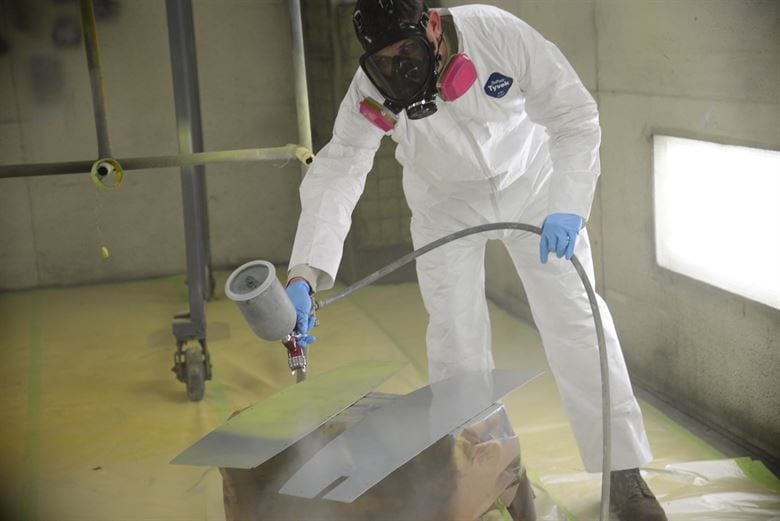Corrosion protection of steel structures by protective paint systems
First introduced as an eight-part standard in 1998, ISO 12944 was updated for the second time in 2018 with some significant changes and additions. Setting standards for coatings for steel structures in atmospheric, immersed, and buried environments, ISO 12944 now has nine parts. This article introduces the standard, answering the key questions that professionals in corrosion prevention ask about it.
What is ISO 12944?
ISO 12944 is a globally recognised standard that lays out the rules and guidelines for the protection of assets from corrosion by use of coating systems and paint. Having been introduced in 1998, it was updated in 2007 and revised a second time in 2018.
The standard covers paint and coatings for steel structures in atmospheric, immersed, and buried environments. It does not cover coatings for concrete, non-metallic substrates, high-temperature surfaces, chemical immersion, and other uses.
The standard covers three factors when dealing with protecting steel structures from corrosion:
1. Corrosivity
The potential of the environment to cause corrosion. To achieve this, the standard classifies the environment into categories that are rated on their ability to corrode unprotected steel.
2. Durability
The expected lifetime of the coating system until its first major maintenance. The standard also emphasises that inspection and minor maintenance should be expected throughout the lifetime of the structure.
3. Coating system specifications
Based on the corrosivity of the environment and the durability of corrosion protection needed, ISO 12944 acts as a guide to selecting the coating system required for the steel structure to be protected.
Who should use ISO 12944?
The standard is designed for use by all those who have some experience and knowledge of either specifying, manufacturing or using paint and coatings to protect steel structures against corrosion in different environments.
Those who need to adhere to ISO 12944 include asset owners, construction companies, engineering companies, corrosion consultants, paint manufacturers and painting companies. Individuals who must work to the standard include:
What standards does ISO 12944 detail?
Within the nine parts of ISO 12944, standards are provided across the following themes:
1. Corrosivity, environments, and categories (parts 2 and 9)
Environments are classified across several categories, with recommendations that cover atmospheric exposure, fresh and seawater immersion, and buried surfaces.
2. Design considerations (part 3)
The standards covered here deal with the basic criteria for the design of steel structures that are to be coated to avoid premature corrosion of the substrate.
3. Surface preparation (part 4)
Standards for the preparation of surfaces are given, with the objective of minimising the risk of premature failure of the coating system used.
4. Protective paint systems (part 5)
The paint system used will depend upon the environment in which it is to be used and the intended durability, and ISO 12944 covers this.
5. Lab testing methods (part 6)
Testing methods and conditions are detailed in ISO 12944. Testing should help users decide which coating system should be used, and so standardises testing to enable more accurate and comparable testing that acts as a guide (but not exact information) for determination of durability within a given environment.
6. Execution and supervision of paint work (part 7)
As you would expect, the standard also deals with how coating of steel structures is executed and supervised, either on-site or in the workshop. The standard includes pre-treatment and paint application methods.
7. Development of specifications (part 8)
Part 8 of the standard deals with development of specifications for the protection of steel structures from corrosion by using coating systems. These standards also apply to the protection of individual components, and cover new work and maintenance both on-site and in the workshop.
What changed in the latest revision?
The major changes in the 2018 revision were:
- The Introduction of part 9, which discusses offshore environments and establishes a new ‘CX’ category.
- Alterations to the categorisation of onshore environments.
- The introduction of a new category for coatings used in conjunction with cathodic protection in seawater and brackish water environments.
- Changes to durability standards, and the introduction of a new category for very long durability of more than 25 years.
- Changes to minimum dry film thicknesses and the minimum number of coats to be used. These specifications have been made mandatory to bring a halt to the ‘race to the bottom’ in which paint manufacturers were producing increasingly thin layers to compete on cost.
- Standards for testing have been updated, with new cyclical testing recommendations to better replicate on-site conditions.
The standard also recognises the need to remain innovative. It states that new technologies and innovative products can be accepted, but the manufacturer must demonstrate suitability by either reference to third-party product testing or a demonstrable track record.
In future articles, we’ll take a closer look at the changes and updates in ISO 12944. You can also read about them in Corrosion Management Magazine.
The Institute of Corrosion Coating and Inspection Training Courses – presented by IMechE Argyll Ruane and Corrodere – will help ensure your painters and inspectors work to the latest industry standards and benefit from new technology and innovative approaches. For more information, contact us today.





